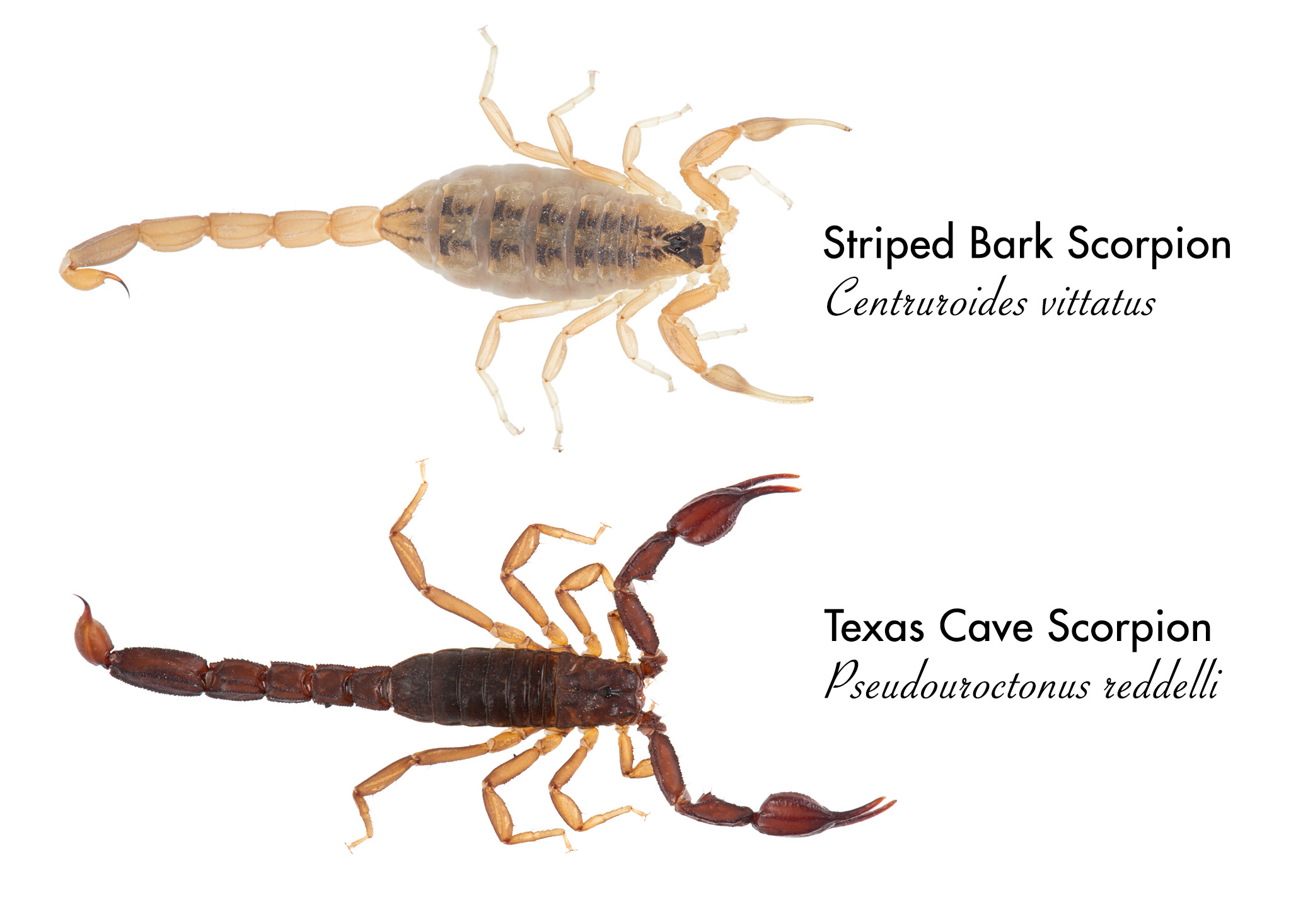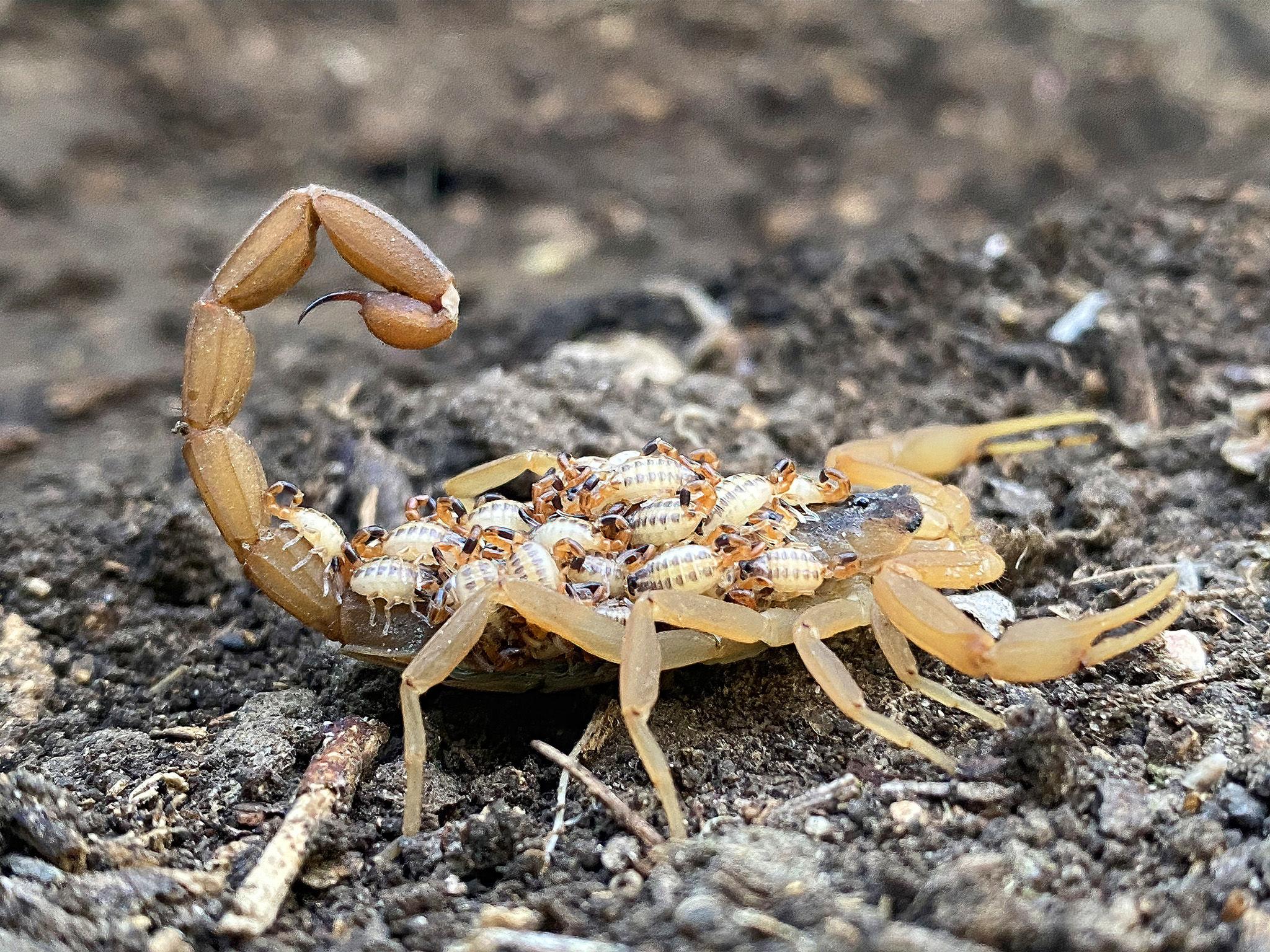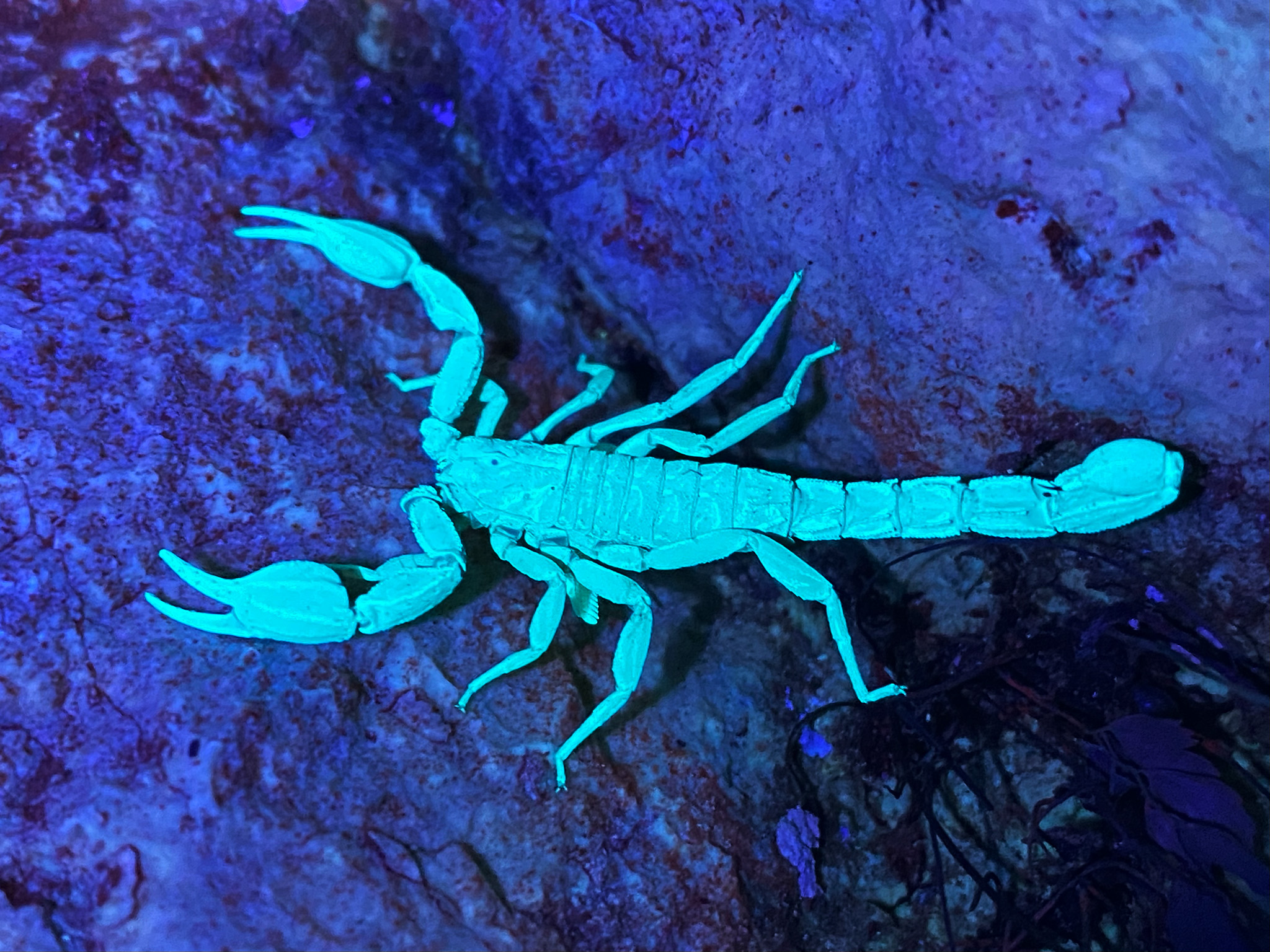No one likes to be surprised by a scorpion inside their home. But these predatory arthropods help eliminate other pests around the house.
With cooler weather settling in, we can have unexpected (and sometimes) unwelcome guests dropping into our homes. Of course, this should come as no surprise to most Texans as we’ve all most likely experienced some form of creepy crawler indoors.
In Texas, scorpions are just a fact of life and with more than 20 species reported from the state they can be found just about everywhere, including in and around our homes.
In Bexar County, although only two species are commonly encountered, they can be prolific. The most common of the two, the striped bark scorpion (Centruroides vittatus), is found throughout most of the central United States and south into Mexico, while the other less commonly seen Texas cave scorpion (Pseudouroctonus reddelli) is endemic to the Texas Hill Country.

Unfortunately, due to their capacity to deliver a painful sting, there’s quite a bit of unfair stigma associated with these otherwise captivating creatures.
While it’s true that scorpions can and will sting to protect themselves, they are not overtly aggressive. Although their sting can be painful, the venom toxicity is considered mild, producing symptoms that typically last 15 to 20 minutes — likened to the stinging effect of the more culturally accepted and even beloved European honeybee. So biases aside, let’s talk about these unique animals.
Believe it or not, scorpions are beneficial. As predatory arthropods, they help reduce the populations of other unwanted pests around your home, such as roaches and spiders. They’re also used in the biomedical field for developing new and innovative ways to treat cancer, kill bacteria and even help relieve painful symptoms from arthritis.
Female scorpions are also amazing mothers. After giving birth, their babies quickly climb onto the mothers back where she will carry them around and protect them until they’re old enough to head off on their own.

Another fascinating and somewhat puzzling trait: their exoskeletons contain fluorescent chemicals that cause them to fluoresce when exposed to ultraviolet light. While many insects and other arthropods use ultraviolet light to navigate at night, it is suspected that a scorpion’s illumination is used to attract mates and potential prey. Take moths, who locate flowers at night by homing in on the reflected ultraviolet light from the flower’s petals. It’s believed that a scorpion may illuminate similarly to a flower, enticing the moth to fly right into its open pinchers.

Of course, as fascinating, and potentially beneficial as they may be, no one wants scorpions inside their home. So, what can we do to keep them outside?
Scorpions are extremely flat bodied and when it gets cold they’ll seek out warmth within rock cracks, tree crevices and other forms of cover. Unfortunately for us, many of our homes are riddled with perfect scorpion size cracks and crevices. Search out and seal any holes, cracks or crevices where a scorpion (or any critter) could crawl into. Pay special attention to the areas around doors and windows as these are common points of entry.
Additionally, around your yard you can plant natural pest deterring plants such as lavender, lemon grass, rosemary, mint or citronella. Also avoid placing wood or brush piles up against your house.


